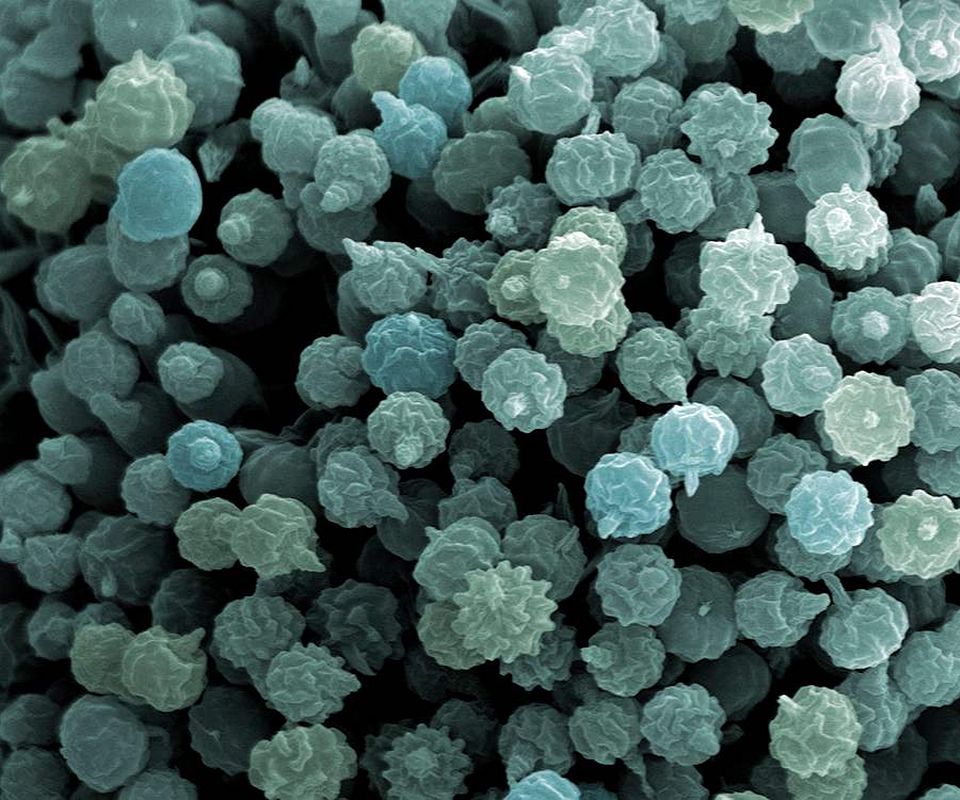If you’ve ever struggled with unexplained fatigue, persistent brain fog, chronic sinus congestion, or mood issues like anxiety or depression and been told it’s “all in your head,” you’re not alone. Many people experience a confusing mix of symptoms that defy easy diagnosis. But what if the root cause isn’t psychological at all?
While it’s easy to overlook environmental factors, one in particular often hides in plain sight: mold.
The Hidden Threat: Mold and Mycotoxins
Mold isn’t just a nuisance in damp basements or bathrooms. It can be a biological disruptor that affects your health at a deep, systemic level. When mold grows in moist, poorly ventilated spaces, it releases both spores and toxic byproducts called mycotoxins. These substances are invisible to the eye but can disrupt human health in powerful ways (National Institute of Environmental Health Sciences, 2023¹).
What Are Mycotoxins?
Mycotoxins are toxic compounds produced by molds such as Aspergillus, Penicillium, and Fusarium. They can contaminate indoor air, settle on surfaces, and even enter the food supply. Once inhaled, ingested, or absorbed through the skin, mycotoxins may:
- Disrupt protein synthesis
- Impair immune function
- Trigger chronic inflammation
- Affect lung function
- Damage the liver, kidneys, and other organs
- Cross the blood-brain barrier and impact neurological health (Gheorghe et al., 2022²)
How Mold Exposure Affects the Body
There are three primary ways mold can harm your health: allergy, infection, and toxicity. Allergic reactions often involve sneezing, sinus congestion, or skin irritation. Mold infections, though less common, can occur in those with weakened immune systems. But the most concerning effects come from chronic mold exposure, which can lead to systemic toxicity.
Mold-Related Neurological Symptoms and Immune Impact
Growing research suggests that mold-related inflammation in the brain can reduce the creation of new neurons and impair memory, mood, and cognitive function. Animal studies confirm that both toxic and non-toxic mold particles can interfere with brain health, particularly in the hippocampus, the region responsible for learning and emotional regulation (Harding et al., 2019³).
Mold exposure also disrupts immune function, triggering chronic inflammation that leaves the body more vulnerable to illness.
Recognizing Mold Toxicity Symptoms
One reason mold-related illness is often missed is because the symptoms vary widely and mimic other health conditions. Common mold toxicity symptoms include:
- Chronic fatigue and low energy
- Brain fog, memory issues, and difficulty focusing
- Headaches or migraines
- Respiratory symptoms like coughing, wheezing, or congestion
- Skin rashes or unexplained irritation
- Digestive problems such as nausea, bloating, or abdominal pain
- Anxiety, depression, or mood swings
- Joint pain, muscle aches, or stiffness
- Heightened sensitivity to chemicals, smells, or electromagnetic fields
Because these symptoms often mimic conditions like chronic fatigue syndrome, fibromyalgia, or depression, many individuals go years without uncovering the true cause.
Why Mold Illness Is Often Overlooked In Conventional Medicine
In conventional medicine (if even recognized as a contributing factor), treatment often focuses on managing symptoms rather than exploring why they developed in the first place. You might receive inhalers for breathing issues, antidepressants for mood changes, or steroids for rashes. While these can provide short-term relief, they don’t address the underlying problem.
Functional medicine takes a different approach. By looking at the whole picture, and understanding all factors including environmental exposures, genetics, and immune health, knowledgeable practitioners work to uncover and treat the root cause.
The Functional Medicine Approach to Mold Illness Treatment
At the California Center for Functional Medicine, we apply a systems-based, personalized strategy to help patients recover from mold illness. This includes:
1. Thorough Testing and Diagnosis
- Environmental testing for hidden mold in the home or workplace
- Blood and urine testing to assess mycotoxin burden and immune system response.
- Comprehensive lab and genetic testing to evaluate detoxification capacity and the whole body impacts of mycotoxin burden.
- Identifying and addressing additional contributing factors and or addressing imbalanced body systems.
2. Targeted, Root-Cause Treatment
- Eliminating Exposure: The first step is always removing or remediating the source of mold to stop further harm. We recommend proven testing with expert IEP and remediation referrals to help guide patients in this process.
- Supporting Detoxification: Therapies like sauna sessions, targeted binders and supplementation help the body clear toxins. We develop a personalized comprehensive mold detox protocol for each patient based on their unique tests and circumstances.
- Optimizing Nutrition and Lifestyle: A nutrient-dense, anti-inflammatory diet, targeted supplements, and stress management practices support the body's healing process.
- Balancing the Immune System: Specific therapies help calm inflammation and restore immune resilience.
3. Ongoing Monitoring and Recovery Support
Mold illness recovery isn’t a quick fix. CCFM provides ongoing support with repeat testing, personalized care adjustments, and a comprehensive mold illness recovery plan tailored to your unique needs. Our goal is steady progress, long-term wellness, and empowering you with the tools to protect your health for the future.
How about this: Mold in Your Diet: A Possible Contributor
Mold exposure isn’t limited to the air you breathe. Certain foods—especially grains, nuts, coffee, and dairy products—can contain low levels of mycotoxins. While the extent to which dietary mycotoxins contribute to chronic illness is debated, ongoing exposure may add to the overall burden on a system already struggling with mold or toxin-related stress. Some mycotoxins, like aflatoxins, have been linked to liver damage, immune suppression, and even cancer. If environmental sources have been ruled out, symptoms like digestive issues, fatigue, or headaches may warrant a closer look at food-based exposures.
Preventing and Remediating Mold Exposure
The best way to protect yourself from mold-related illness is prevention. Simple steps include:
- Keeping indoor humidity below 50%
- Using ventilation fans in bathrooms and kitchens
- Using high quality air filters that can remove mold spores from the home
- Promptly identifying and repairing leaks in roofs, basements, or plumbing
- Removing carpets from moisture-prone areas or replacing them all together
- Cleaning small mold spots with appropriate products
- Hiring professionals for larger mold problems
- Choose mold-free coffee brands
- Store grains, nuts, and coffee in cool, dry environments
- Discard visibly moldy food
- Be cautious with bulk purchases of susceptible foods that may sit for extended periods
If you suspect mold is affecting your health, professional testing, dietary awareness, and proper remediation are essential (National Institute of Environmental Health Sciences, 2023⁴).
It’s Not All in Your Head, It Could Be in Your Environment
If you’re dealing with lingering symptoms like fatigue, brain fog, or chronic congestion and suspect mold could be the cause, don’t let it be dismissed as “all in your head.”
At CCFM, we specialize in identifying hidden environmental triggers like mold and guiding patients through a comprehensive, personalized recovery plan. Our goal is to help you get to the root, restore your health, and feel like yourself again. If you are sick with mold illness, we can help.
Ready to take the next step? Book a free discovery call today and let’s explore how we can help.
References
¹ National Institute of Environmental Health Sciences. (2023). Mold. Retrieved from https://www.niehs.nih.gov/health/topics/agents/mold
² Gheorghe, D., et al. (2022). Mycotoxins' Toxicological Mechanisms Involving Humans, Livestock, and Crops. Toxins, 14(4), 267. https://www.ncbi.nlm.nih.gov/pmc/articles/PMC8949390/
³ Harding, C. F., et al. (2019). Mold inhalation causes innate immune activation, neural, cognitive, and emotional dysfunction. Brain, Behavior, and Immunity, 80, 140-148. https://www.ncbi.nlm.nih.gov/pmc/articles/PMC7231651/
⁴ National Institute of Environmental Health Sciences. (2023). Mold and Your Health [PDF]. Retrieved from https://www.niehs.nih.gov/sites/default/files/health/materials/mold_508.pdf
⁵ Centers for Disease Control and Prevention. (2023). Mold. Retrieved from https://www.cdc.gov/mold-health/about/index.html





